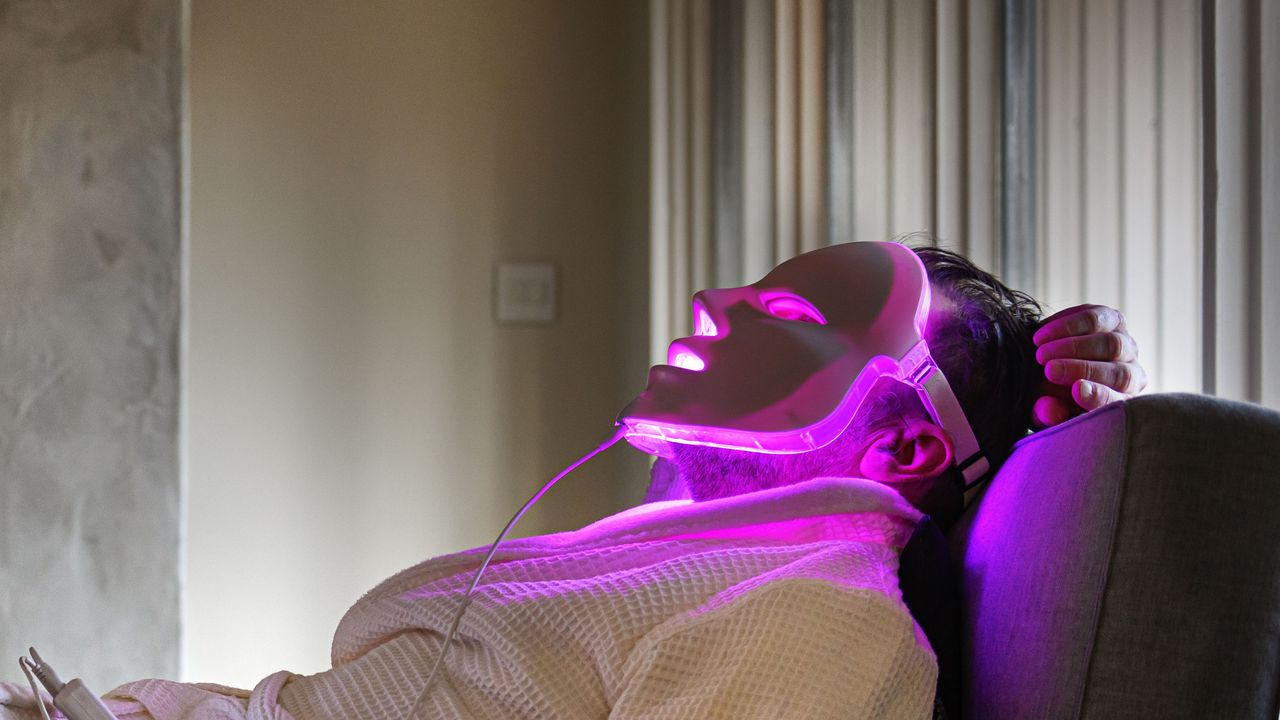
How to Use an LED Face Mask for Glowing Skin
So you’ve splurged on one of the best LED face masks and want to be sure you get the most out of it? The good news is that dermatologists say these types of red-light therapy devices really do work, provided you use them properly and consistently.
How do you use an LED face mask for best results?
“Using an at-home mask is like going to the gym,” says Shereene Idriss, MD, a board-certified dermatologist and founder of Idriss Dermatology in NYC. To truly see any skin care benefit, you need to use it consistently for the recommended usage time.
Because of this, dermatologists recommend purchasing an FDA-cleared device that best fits your lifestyle. There are full-face masks (like the Omnilux Contour), wands (e.g., the Solawave 4-in-1), and even spot treatments (FaceGym Acne Light Shot, for one), and all can be effective with little to no side effects—as long as you actually use it on a regular basis.
Fit is also a factor when using at-home devices. Some face masks are made of flexible silicone, while others are made of more structured plastic. Though both can be effective, derms tell Glamour you’ll get optimum light penetration when the mask sits flush with your skin. In our evaluations, we found some testers preferred flexible masks (like the HigherDose) for their adjustability and more customized fit.
How often should you use an LED face mask?
Though the exact recommendations vary from mask to mask, and there are some outliers with shorter or longer treatment times, the most common regimen is at least three to five times per week for 10 to 20 minutes at a time.
Should you put anything on before?
To prepare for an LED device treatment, skin should be freshly washed with cleanser and patted dry, says Kristina Collins, MD, a board-certified dermatologist in Austin. “Avoid applying skin care products beforehand, as some ingredients (SPF, retinol, or exfoliants) may interfere with light absorption.” Using a mask with fresh, clean skin can also help keep your device cleaner and functioning better.
After an LED treatment, you can follow with your regular skin care routine, like serum or moisturizer to help lock in moisture and improve hydration levels. “If using red or infrared light for antiaging benefits, follow up with products containing antioxidants or peptides to enhance collagen production,” says Dr. Collins. “If using blue light for blemishes, apply a lightweight, noncomedogenic moisturizer and acne treatments as needed.” And if you use your mask in the morning, always finish with a broad-spectrum face sunscreen. “A light-therapy face mask can make the skin more sensitive to UV exposure,” says Dr. Collins.
How exactly do these masks work—and what kinds of benefits can you expect to see?
As the name suggests, LED face masks are equipped with built-in LED lights, most commonly red light and near-infrared light. When used at the recommended wavelengths of light—about 620 to 750 nanometers for red light and 760 to 1,400 nanometers for near-infrared—they stimulate cell regeneration to improve overall skin tone and skin texture, plus target specific skin concerns like wrinkles, hyperpigmentation, acne, and even wound healing.










